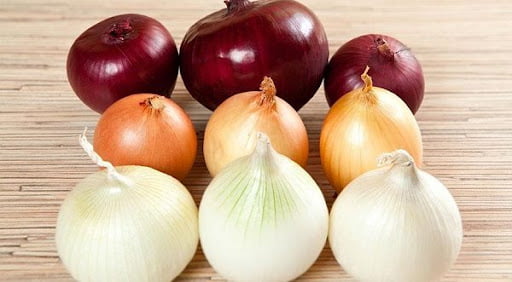Amidst soaring onion prices in the Philippines, recurrent export bans from India – once the top global exporter—and Pakistan’s burgeoning onion imports, questions emerge about the potential for change in the near term. What drives these supply issues for a vegetable that’s widely cultivated across the globe? Could there be a business opportunity for nations like Uzbekistan, Tajikistan, or even Ukraine?
To understand the Asian onion shortage, we must examine its root causes: climatic, economic, regulatory, and demographic factors.
Climate change’s rapid pace leaves farmers struggling to adapt, leading to increased crop losses and reduced yields as traditional onion varieties fail to meet expectations. This yield decline has been a primary factor in India’s recent shortages.
In 2022, floods in Pakistan devastated onion crops, transforming the country into a significant importer for the 2022/23 seasons – a trend scientists warn may become more common.
Regulatory measures also significantly impact onion availability in Asia. Many countries, including India, are turning to non-market interventions like export bans or restrictions via tariffs and quotas. Such policies heighten business risks, deter investments, and could ultimately depress production. Recently, several regional nations, including Uzbekistan, Turkey, Egypt, Kazakhstan, Kyrgyzstan, and Tajikistan, have imposed export bans. In the Philippines, record-high prices stem from the government’s delay in liberalizing imports amid a clear market deficit.
Read also: Cheap onions from Egypt are to flood Europe in the coming days?
Moreover, the rapid population growth in Asian countries – equivalent to adding almost an Australia annually (+20-25 mln people) – intensifies demand. With Asia’s onion consumption already surpassing other regions, addressing these challenges is crucial for meeting the dietary needs of this expanding populace.
EastFruit’s data reveals that Asia holds half of the positions among the world’s top ten onion importers. Notably, as of the end of 2023, Bangladesh has overtaken the USA, becoming the largest importer globally with an annual intake of 887 thousand tons. Malaysia vies with the UAE for second and third place, each importing 500 thousand tons yearly. Vietnam’s import figures are also on the rise, currently exceeding 350 thousand tons per annum, positioning it for an upward shift in the rankings. Additionally, Sri Lanka and Japan have made their way into the top ten. By the way, more detailed analysis of the top 25 onion importers and import trends can be viewed here.
Collectively, these nations imported 2.3 million tons of onions in 2023, marking a three-year growth of 332 thousand tons. This translates to an average annual increase of 6%, or 110 thousand tons, for these five Asian countries.
Given these statistics, the onion shortage in Asian markets appears to be on track to become a persistent issue. Whether Central Asia will capitalize on this remains to be seen, especially considering the urgent need to address logistical challenges to the rest of Asia.
Europe faces similar onion dilemmas, making it an unlikely candidate to satisfy Asia’s escalating demand. Furthermore, the European preference for yellow onions contrasts with Asia’s predilection for white and purple varieties.
Sub-Saharan Africa emerges as the prime candidate to fulfill Asia’s onion requirements, despite currently being a significant importer from Europe. The region is ripe for large-scale onion farming initiatives spearheaded by bold foreign investors ready to navigate its high sovereign risks.
Moreover, China is poised for an uptick in onion production and export, given the stagnation in local consumption due to demographic decline and economic inertia.
Maintain full control over fruit and vegetable prices in Turkey, Egypt, Ukraine, Uzbekistan, Russia, Moldova and other markets subscribing to EastFruit Premium.




